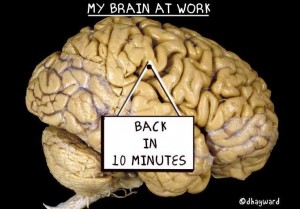How many times have you heard someone say, “I can’t do that; I just don’t have the talent”?
In this case, talent is seen as a mystical endowment, a gift bestowed at birth. Or in less flowery terms, a “knack” for a particular activity.
But when you really look into the matter — examining the childhoods of geniuses with super-ability — you see a different story.
In Geoff Colvin’s Talent is Overrated, he examines just that. Looking at research in various realms, as well as case studies, he tries to uncover what the source of talent might be.
Is it intelligence? Not necessarily, as evidenced by the fact that “some people have become international chess masters though they possess below-average IQs.”
Is it superior memory? Not so, because scientific experiments have shown that memory can be greatly expanded through proper training.
Is it some kind of physical propensity, such as faster reaction times or the right kind of body build? Not really, because “endurance runners, for instance, have larger than average hearts, an attribute that most of us see as one of the natural advantages with which they were blessed. But no, research has shown that their hearts grow after years of intensive training; when they stop training, their hearts revert to normal size. Athletes can change not just the size of their muscles but even the composition of them (the proportion of fast-twitch fibers to slow-twitch) through years of practice.”
Or, is it inborn? If so, this would suggest the existence of a “talent gene” – and to date, none has been found.
Well, what is the answer then, you ask? Drumroll……………………………………………………………………
……….it is deliberate practice, carried out for many years, and often starting earlier than the norm (for other practitioners of an activity).
That’s it, you ask? But what about geniuses like Mozart, who composed music when he was five years old?
Colvin examines the case of Mozart, only to find that “Mozart’s father was of course Leopold Mozart, a famous composer and performer in his own right. He was also a domineering parent who started his son on a program of intensive training in composition and performing at age three…he was deeply interested in how music was taught to children…he was highly accomplished as a pedagogue.”
Colvin goes on to note that many of Wolfgang’s early compositions are in fact compositional studies – arrangements of the work of other composers. The earliest work by Mozart that is today considered a masterpiece, his piano concerto No. 9, was in fact written when the composer was 21; in other words, after he had amassed some eighteen years of intense training.
Another groundbreaking fact to note is that, contrary to what many of us were taught, Mozart did not in fact write down pieces that had been fully formed in his head. “Surviving manuscripts show that Mozart was constantly revising, reworking, crossing out and rewriting whole sections, jotting down fragments and putting them aside for months or years.”
So, now that we’ve seen the incredible results of deliberate practice, one question remains: what separates those who partake in this type of practice from others? Since deliberate practice is difficult and a great time investment, what motivates people to do it in the first place?
Colvin proposes a few possibilities to this mysterious question. One is “the multiplier effect.” It purports that “a very small advantage in some field can spark a series of events that produce far larger advantages.” Take, for example, a young child who has better-than-average forearm strength to begin with, who then joins a baseball team, and receives positive feedback for his slightly superior ability, which in turn motivates him to work even harder, creating a self-perpetuating cycle. Also, the better he gets, the more he seeks out more advanced opportunities and has the chance to work with better players and coaches. In this way, each increase of ability is matched by a better environment, creating the conditions for superior performance.
Another factor that motivates people to engage in deliberate practice is believing that they are uniquely capable. “In all fields most of these young students were regarded as fast learners by their first teachers…Whether or not they were really faster learners than others is not known…As they began to receive recognition for the talent in the early years of instruction, the children’s investment in the talent became greater. No longer was the prime motivation to please parents and teachers. It now became the individual’s special field of interest.”
Colvin points out that “talented” youngsters are compared with others their age, not with the best in the field, using Tiger Woods’s youth as an example. By starting earlier than the norm, a child has the chance to amass more deliberate practice than their peers of the same age, creating a sense of “talent” and competence, which in turn fuels their motivation to continue to practice. As Colvin states, “Standing out at any given age is an excellent way to attract attention and praise, fueling the multiplier, and it can be done without relying on any innate ability.”
What do you think? Do you believe that talent is innate, or is it a result of the right mix of factors?



